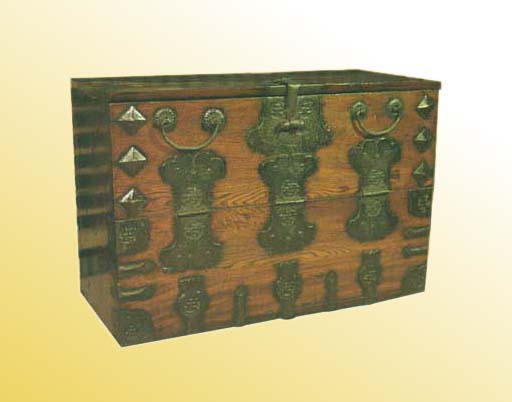| Cherry
Bandaji
Cherry and zelkova woods; iron fittings; oil finish. Late nineteenth century; Cheju Island.
|
 |
| Cherry
Bandaji
Cherry and zelkova woods; iron fittings; oil finish. Late nineteenth century; Cheju Island.
|
 |
|
|
| Click on the view you would like to see. | 
Front view |
|
|
|
|
|
|
5. Red paulownia nong |
6. Wild walnut nong |
7. Red pine ham |
8. Cherry bandaji |
9. Zelkova bandaji |
10. Persimmon nong |
11. Zelkova lattice jang |
12. Pine framed bandaji |
13. Red pine bandaji |
More |